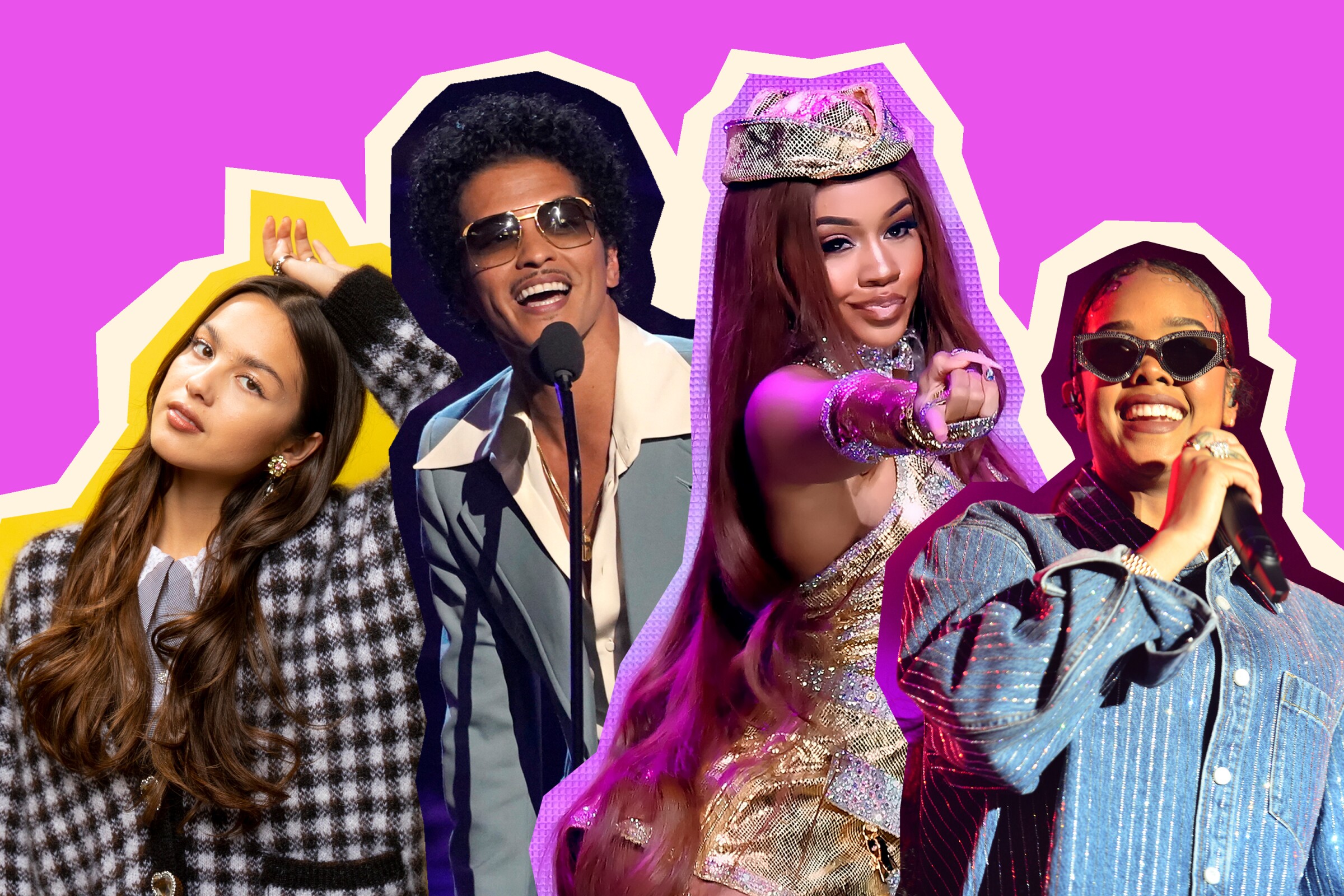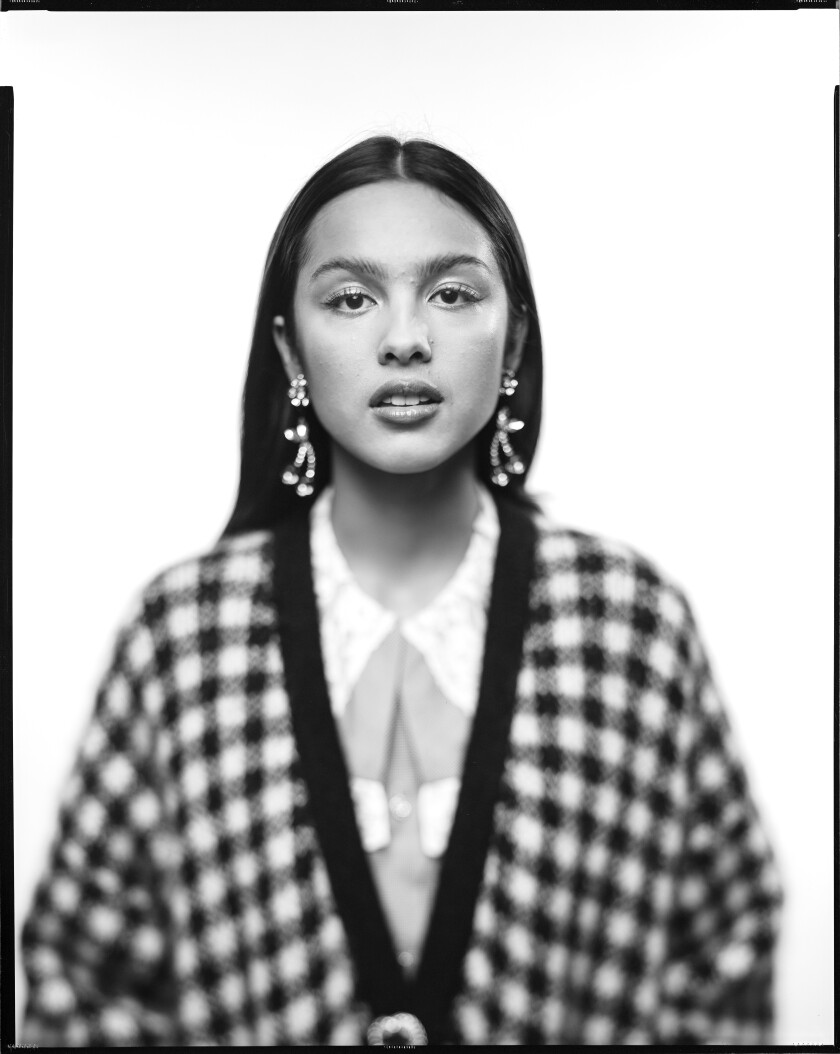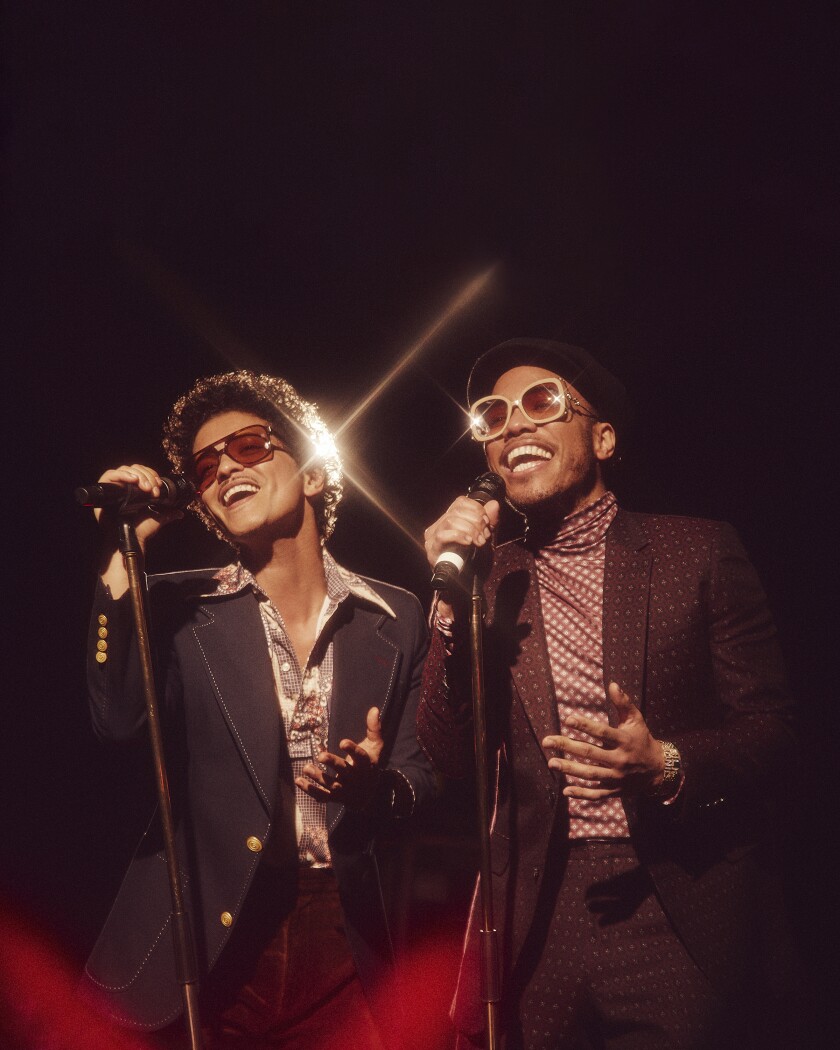
Growing up as a biracial Black and Filipina musician, singer-songwriter H.E.R. could count on a few things her two cultures shared.
“Filipino Americans love R&B like Mariah Carey and Whitney Houston. We love hip-hop and we love a really powerful ballad. There’s always music happening,” the 24-year-old born Gabriella Wilson said, two days before presenting at the Academy Awards and a week before she’s up for album of the year at the 64th Grammys. “I should be careful here, but Filipinos are kind of like the Black people of Asia. I love all our commonalities. When my mom married a Black man, our cultures meshed.”
Amid the pressure on the Grammys to better represent the diversity of who makes and listens to pop music today, this year’s nominations showed one notable flowering of that work: it’s the best year for Filipino Americans in Grammy history.
Across top categories, acts with Philippine heritage including Olivia Rodrigo, Saweetie and H.E.R. are up for best new artist and album, song and record of the year prizes. Longtime Grammy favorite Bruno Mars, a multiracial Filipino American Hawaii native, is in contention for four awards with his funk and soul band Silk Sonic, including song and record for “Leave the Door Open.” The Americana singer Elle King, daughter of biracial Filipino American comedian Rob Schneider, is up for country group/duo performance for her duet with Miranda Lambert, “Drunk (and I Don’t Wanna Go Home).” Between them, they have 22 Grammy nominations this year.

All the above acts have multifaceted ethnic backgrounds and arrived at their success through very different genres. (Beyond this year’s Grammys, the Black and Filipino American singer and “Euphoria” star Dominic Fike also enjoyed a breakthrough year.) For the more than 4 million Filipino Americans in the U.S., and especially the 1.6 million in California (where Rodrigo, H.E.R. and Saweetie are from), it’s a moment in the limelight for a tradition of Asian American music culture that’s often blended into other sounds here.
“Within the last couple of years, there’s been a groundswell of Filipino American artists who’ve talked about or embraced their Filipino background more than predecessors like Enrique Iglesias or Nicole Scherzinger,” said James Zarsadiaz, director of the Yuchengco Philippine Studies program at the University of San Francisco. “Artists have been able to talk more freely about how their Filipino backgrounds shape their perspectives or artistry, because Filipinos have truly permeated ‘mainstream’ American culture and consciousness.”
The history of the Philippines and the U.S. has been long and fraught since the colonial era. Control of the Southeast Asian archipelago, formerly a Spanish colony, was contested after the Spanish-American War, and after first declaring independence, the Philippine-American War brought the country under U.S. colonial governance in 1902. At the end of World War II, the Philippines became independent in 1946, though the U.S.’ long military presence there created a complex, charged cultural exchange.

“By that colonial connection, there’s always been a tie between the U.S. and the Philippines that includes music,” Zarsadiaz said. “There’s a power in the diaspora in the notion of ‘kababayan,’ a notion of community and support for fellow Filipinos — they’re one of us, their success is our success.”
Filipino American musicians have, over generations, made an impact on U.S. charts. The explosive R&B singer-dancer Sugar Pie DeSanto toured with James Brown and found national success in the the 1950s and ’60s, and a “Pinoy Rock” movement that riffed on Elvis Presley, American surf and British Invasion sounds became popular in the Philippines at the same time. Broadway performer Lea Salonga was the singing voice for Disney’s Jasmine and Mulan; the Black Eyed Peas’ Apl.De.Ap (born Allan Pineda Lindo) performed on some of the biggest hits of the 2000s, and the actor Darren Criss (who like H.E.R., grew up in the Bay Area) was a heartthrob on “Glee.”
Mars, born Peter Gene Hernandez in Hawaii to a Puerto Rican father and Filipina mother, gave $100,000 to a hurricane relief fund during a 2013 tour stop in Manila, and said onstage, “I’m so proud and so happy to be Filipino.”
“Filipino Americans listen to everything, but culturally are major consumers of hip-hop and R&B. Filipino Americans are often great breakdancers or in dance troupes,” Zarsadiaz said. “It’s not coincidental that a lot of them have origins on West Coast in that multicultural landscape. Hip-hop and R&B are generally seen as pop music among people of color, and for Filipino Americans, it’s part of the soundtrack of their daily lives.”